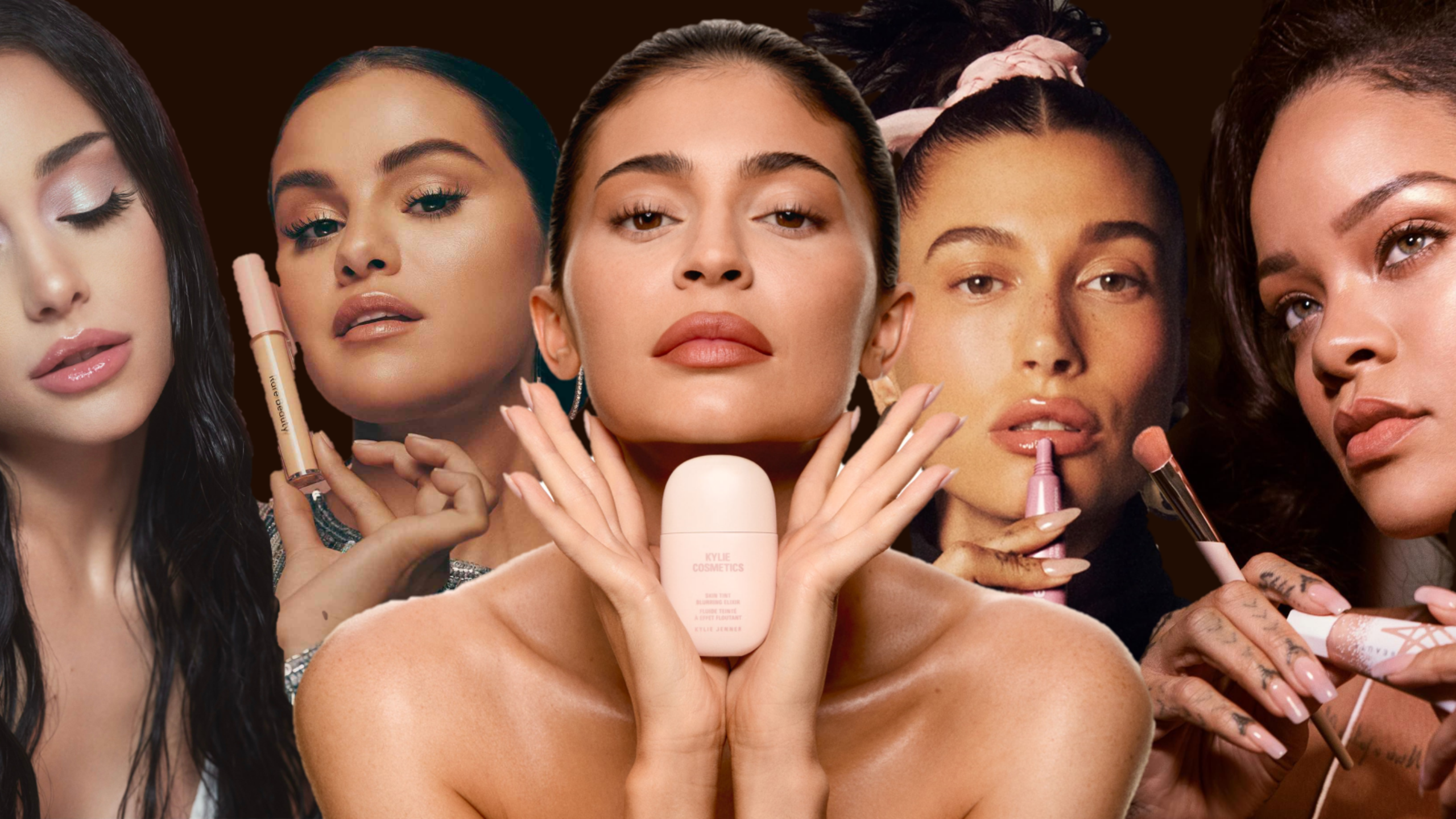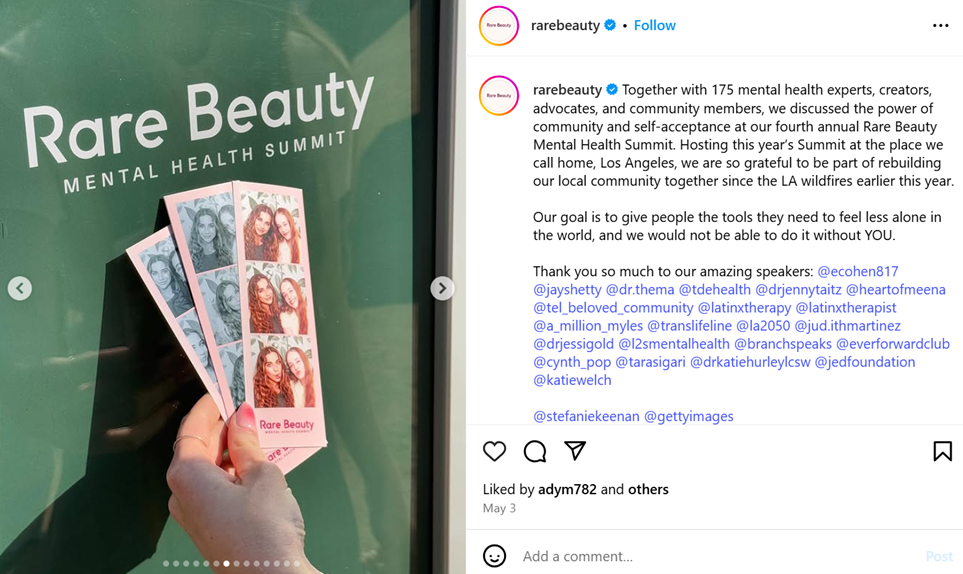5 (Pretty) Big Marketing Strategies from Top Beauty Brands

With Forbes reporting that the beauty industry generated approximately $94.36 billion in sales in 2023, the cosmetics industry offers marketers a masterclass on how leading brands and challengers can make their mark.
Here, I’ve rounded up some words of wisdom from guests of the Uncensored CMO podcast, hosted by Jon Evans, Chief Customer Officer at System1, as well as a few other tactics to inspire marketers, whether they operate in the beauty sector or beyond:
1. Know your Customer and Brand
There are so many cultural trends and conversations happening on a daily basis across numerous channels that it can seem impossible to know where to start and how to break through the noise. To prioritize where and how your brand shows up, marketers should deeply understand two things.
First, the brand – this includes its heritage, distinctive assets, purpose, tone of voice, etc. Second, the customer – how they think, feel, act and interact with the brand, what motivates them, why they buy your brand, what they want to see next from you.
Rare Beauty is one of those brands that has a clear identity. Its founder, singer Selena Gomez, is passionate about mental health and making beauty a welcoming and safe space for all. The brand donates 1% of its sales to the Rare Impact Fund, which supports 30 mental health organizations in five continents.
The brand also recently hosted its 4th annual Mental Health Summit, bringing together 175 thought leaders, experts, creators, advocates, and community members to discuss mental health and self-acceptance. This type of event doesn’t make sense for every brand, but it aligns perfectly with Rare Beauty’s mission and values.

In a conversation on the Uncensored CMO podcast, Rare Beauty CMO Katie Welch reiterated the importance of knowing the brand and the community intimately:
“You cannot plan for a viral video, but you have to have an understanding of the community to be able to have success, have engagement. You have to be creative, curious, stay on top of trends and then figure out how you can interpret your brand for that platform. You do have to understand your brand so clearly.”
During his appearance on the Uncensored CMO podcast, Lex Bradshaw-Zanger, CMO for L’Oréal South Asia Pacific, Middle East & North Africa Region, also spoke about how knowing your brand and audience well comes into play when new trends arise. L’Oréal operates as a ‘house of brands’, with many distinct names under the L’Oréal umbrella. What works for one brand may not work for another, as they have differing price points, target customers and identities.
“Trends in communication and what people are talking about, there is a logic that sits with the brands. The brands know what sort of audience they’re talking to and what’s relevant for them. A high-end brand might not do the same as a mass brand. When there’s a trend out there…understanding your brand and understanding what it stands for and where it can operate.”
With many trends rising and falling quickly, marketers need to have a concrete understanding of what ‘fits’ their brand voice so they can join the conversations that make the most sense for them and their customers, and opt out of the ones that don’t pass the marketing vibe check.
2. Reduce the Distance between Insight and Action
On the Uncensored CMO podcast, e.l.f. CMO Kory Marchisotto noted:
“There’s two things that are a forward-looking indicator of success for any brand. The first one is the distance between the C-suite and the community that they serve. The second one is the distance between insight and action. The shorter the distance, the greater chance for success in both of those cases.”
Marchisotto not only reiterates the importance of point #1 but also highlights the need for businesses to reduce complexity in collecting insights and making decisions. The best brands eliminate corporate red tape so they can quickly turn customer insights into a response – whether it’s a new product launch, an exciting partnership or program or a PR package distributed to micro influencers, a raving fan or even a disgruntled customer who deserves to be won over.
Senior Director of Research and Insights at e.l.f., Sarah Beachler reiterates, “Speed is of utmost importance to us as we get our ideas out into market so we can move at the speed of culture. “
3. Get People Talking during the Moments that Matter
What are the can’t-miss moments for your brand? For Fenty, launched by singer Rihanna, it was the Super Bowl LVII halftime show, at which Rihanna performed. In the middle of her medley, Rihanna did the unthinkable – she took a quick break to fix her makeup with the brand’s Invisimatte Blotting Powder and Icon Velvet Liquid Lipstick.

The pre-planned moment was of course genius – it generated a reported $5.6 million in Media Impact Value (MIV) for Fenty Beauty in the first 12 hours following the show, led to a 278% increase in website visits during the Super Bowl weekend and boosted sales and social media mentions dramatically.
To this day, Fenty still features Rihanna’s makeup kit for the halftime performance to highlight all the products the star used to look Super Bowl ready.
While not every brand has the budget for a Super Bowl feature, every marketer can define for their brand what the ‘big game’ moments are that will generate conversations that amplify their message and their products. Some of the best opportunities are those that already have a built-in audience. It’s why we’re seeing so many brands getting in on the fun around events like Coachella, Stagecoach, Fashion Week and even Taylor Swifts’ Eras Tour. Of course, the most skilled marketers can also leverage owned events to create buzz.
4. Innovate ‘Outside the Box’
The beauty industry is no stranger to exciting products. There are of course the mainstays most or every brand produces, like primer, foundation, blush, lip gloss and lipstick, mascara and more. There’s also newer innovations, like snail mucin skincare, wet formula dry shampoo, red light masks and yes, even butt masks! What will they think of next?!
In 2024, beauty brand Rhode, owned by Hailey Bieber and soon to join the e.l.f. Beauty portfolio, reminded the industry that innovation can expand beyond the traditional SKUs. Rhode timed the widely anticipated restock of its popular lip treatments with a perfectly paired solution to keeping track of your go-to lip product – the ‘Lip Case’, a phone case that features a convenient space to hold the Peptide Lip Treatment and show it off when taking selfies.
Why does it work so well? It puts Rhode and its buzzy product at the center of social moments that get documented on Instagram, Snapchat, and TikTok, further helping to amplify everyone’s lip gloss of choice. A brilliant marketing play for a newer brand that’s aiming to appeal to Gen Z and Gen Alpha, as well as win market share in a competitive space. The Lip Case quickly sold out and has continued to be restocked by Rhode to promote its top-selling product so it’s clearly a fan-favorite accessory!

5. Remember that Product is not Enough
During her Uncensored CMO interview, Marchisotto also stated:
“Product is absolutely key. The success over time and a brand’s ability to have a rightful position for over 20 years, it can’t just be about product. Product’s not enough. You have to be able to transcend product to become a brand that people love.”
So, while innovating and launching in-demand products is essential (listen to the full episode to hear how consumers led e.l.f. to fast track its bronzing drops), brands also need to think about the bigger picture. This brings us back to our first point – knowing your brand and the consumer is key!
Senior Director of Research and Insights at e.l.f., Sarah Beachler describes it as a trifeca of product, positioning and brand love saying, “The ability to create a tribe, where consumers have a deep ‘this-is-for-me’ emotional connection to the brand unlocks real devotion.”
Create with Confidence
Ready to put the above strategies into practice? System1 can help you predict and improve the commercial impact of your ads and ideas with our Test Your Ad and Test Your Innovation platforms. Whether it’s a new campaign for TV, digital and OOH or the forthcoming launch of a new formulation, SKU or sought-after collaboration, we can support your marketing and product development teams from the very early stages of ideation and strategy.
Learn more about the power of our testing platforms, which leverage consumers’ emotional responses to give marketers the confidence to launch their most promising ads and ideas.
